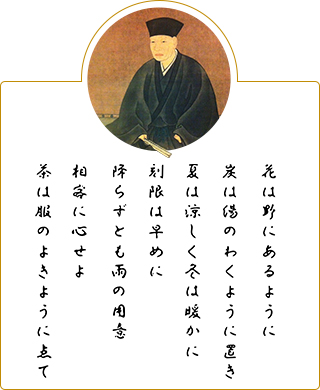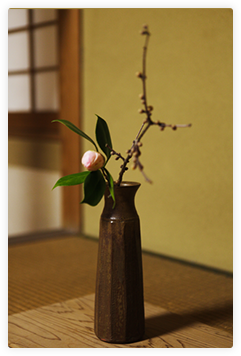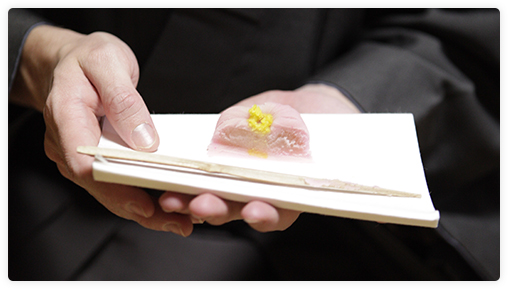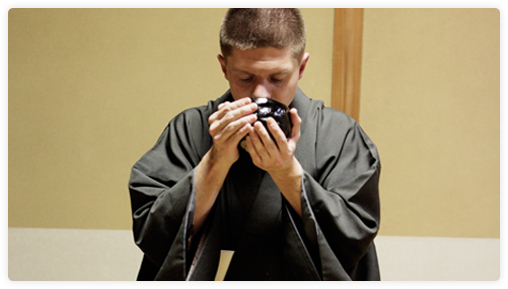JAPANESE TEA CEREMONY
The Japanese tea ceremony truly began in the 16th century. When a tea master, Sen Rikyu gave his explanation of "Chado" or the "Way of Tea." Rikyu believed that to fully understand the true meaning of a tea ceremony, you must follow specific rules. After years of practicing and mastering the tea ceremony, Rikyu said there are 7 rules that everyone must do to master the art of the "Way of Tea".
The 7 rules:
- Make a satisfying bowl of Tea
- Lay the charcoal so that the water boils efficiently
- Provide a sense of warmth in the winter and coolness in the summer
- Arrange the flowers as though they are in the field
- Be ready ahead of time
- Be prepared in case it should rain
- Act with utmost consideration toward your guests
When Rikyu first gave his 7 rules of the Japanese tea ceremony, the students were not to happy. Everyone understood these 7 rules were obvious in the natural steps of a tea ceremony. Rikyu replied by saying "Anyone who can carry all of the rules without failing, I will become their disciple."
Rikyu created 4 principles of the Japanese tea ceremony. He said to master these 7 steps above, follow these 4 principles:


Wa (Harmony)
A feeling of closeness with nature and people.

Kei (Respect)
A feeling of thankfulness to everyone and everything around them.

Sei (Purity)
A physical and spiritual sense of cleanliness and orderliness.

Jaku (Tranquility)
A feeling of "silence" that can be obtained by studying Tea, if you have reached the previous stages of Harmony, Respect, and Purity.
The "Way of Tea" is not about the tea itself but about everything around you is perfect. Rikyu believed that if you mastered the "Way of Tea" then you are connected with everything around you in your daily life. He also says, mastering these steps take years of practice and mental growth. Rikyu 7 rules, leads up to this; The perfect tea must capture the "flavor" of the moment, the spirit, the occasion, of the time and place. Rikyu believes this is a special bond that is shared with only the guests inside the tea room.
STEPS OF CHADO
Before a lesson takes place, the tea master must do a variety of duties:
- Invite guests
- Clean the Japanese tea garden
- Choose the utensils for the tea lesson
- Prepare sweets
- Clean the tea room completely/ change tatami mats if needed
- Flower arrangement
- Plan for the unexpected

STEP BY STEP GUIDE
Step by step guide from the Tea Master's point of view
- Sadouguchi Fusuma (opening of the door)
- Presenting Wagashi (sweets for tea ceremony)
- Bringing in the utensils for tea
- Greetings
- Cleaning the Netsume (tea holder)
- Cleaning the Chashaku (bamboo tea scoop)
- Removal of the Futa (ladle rest) from the Kama (iron pot)
- Clean the Chasen (bamboo whisk)
- Warming the Chawan (tea bowl)
- Put Matcha into Chawan
- Remove the lid from the Mizusashi (cold water container)
- Hot water in to Chawan with the Hishaku (ladle)
- Whisk Matcha
- Serve tea to guests
- Dialog with Shokyaku (main guest)
- Clean the Chawan
- Repeat making tea until every guest is served

ETIQUETTE FOR GUESTS
- 1. Receive and eat Wagashi (tea sweet)
- 2. Pick up the Chawan (tea bowl)
- 3. Apologize and bow for drinking first
- 4. Drink Matcha
- 5. Wipe the rim with Kaishi (napkin used for the sweets) or your first 2 fingers
- 6. Put the Kaishi in the left side of your Kimono (traditional Japanese clothes)
- 7. Appreciate the bowl by studying it profoundly in all directions
- 8. Slowly place the bowl on the tatami mat using your right hand





